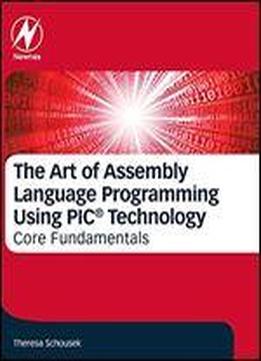
The Art Of Assembly Language Programming Using Pic Technology: Core Fundamentals
by Theresa Schousek /
2019 / English / PDF
54.2 MB Download
The Art of Assembly Language Programming Using PICmicro Technology: Core Fundamentals thoroughly covers assembly language as used in programming the PIC Microcontroller (MCU.) Using the minimal instruction set characteristic of all PICmicro products, the author elaborates on how to execute loops, control timing and disassemble code from C mnemonics. Detailed memory maps assist the reader with tricky areas of code. Math routines are carefully dissected to enhance understanding of minute code changes. Appendices are provided on basic math routines to supplement the readers' background. In depth coverage is further provided on paging techniques, unique to the PICmicro 16C57 series controller. This book is written for an audience with a broad range of skill levels, relevant to both the absolute beginner and the skilled C embedded programmer. A supplemental appendix on 'Working with a Consultant' provides advice on working with consultants, in general, and on selecting an appropriate consultant within the microchip design consultant program. With this book you will learn: the symbols and terminology used by programmers and engineers in microprocessor applications how to program using assembly language through examples and applications how to program a microchip microprocessor, selecting the processor with minimal memory, and therefore minimal cost options how to locate resources for more in-depth material content and how to convert higher level language ICs to a lower level language. Teaches how to start writing simple code, e.g., PICmicro 10FXXX and 12FXXX Offers unique and novel approaches to add your personal touch using PICmicro 'bread and butter' enhanced mid-range 16FXXX and 18FXXX processors Teaches new coding and math knowledge to help build your skill sets Shows how to dramatically reduce product cost by achieving 100% control Demonstrates how to gain optimization over C programming, reduce code space, tighten up timing loops, reduce the size of microcontrollers required and lower overall product cost











